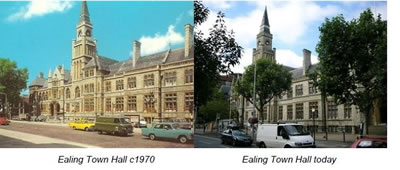Conservation Past and Future
Celebrate the work of Ealing Civic Society in its 50th year
|
2017 marks the 50th anniversary of Ealing Civic Society as well as of the Civic Amenities Act 1967 and the establishment of the first conservation area in Stamford, Lincolnshire.
To mark the anniversary of both events, Ealing Civic Society will be hosting a talk by Paul Bedwell, Civic Voice trustee, entitled 50 years of Conservation Areas on Tuesday, 11 July at 7:30 PM in the Nelson Room, Ealing Town Hall.

Historic England has been working with Civic Voice and the Institute of Historic Building Conservation (IHBC) to build a picture of their members’ attitudes towards conservation areas half a century on through two parallel surveys.
The overall picture indicates that conservation areas have been effective at preserving areas of
historic and architectural interest. Almost all respondents from both groups felt that conservation
areas had been in some way successful at protecting heritage, with nearly half thinking they had
been ‘very’ or ‘extremely’ successful. Respondents felt that most conservation areas appear to be
in a stable condition.
Most of them from both groups (roughly half) felt that the appearance and
vitality of their known conservation area had not changed significantly in the past 3 years. The
picture, however, is not all positive and respondents from both groups identified a number of
issues to be confronted in this anniversary year.
The controls in conservation areas are not well
understood. Only 2% of IHBC and Civic Voice members believed the general public have a good
understanding about the extent of additional controls in place with more than half feeling that the
public had little’ or ‘no’ understanding. And of the respondents who did report significant change in
their local conservation area in the last three years, more were likely to perceive a deterioration
rather than an improvement.
The five most significant concerns identified by both groups were street clutter, loss of traditional
paving materials, advertisements, a lack of maintenance and loss of historic details. The most
frequently mentioned concerns were with doors and windows, signs and advertising, shopfronts
and the deteriorating condition of front elevations generally.
More information about the event is available from info@ealingcivicsociety.org
30th June 2017